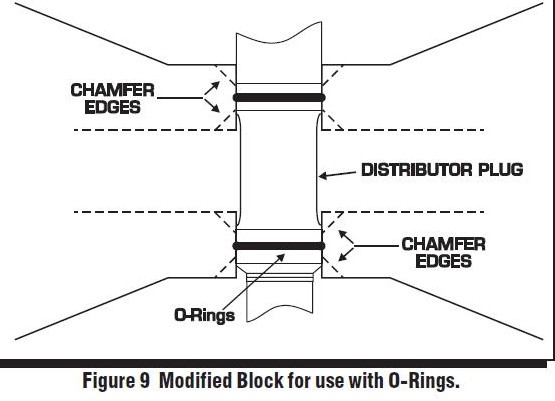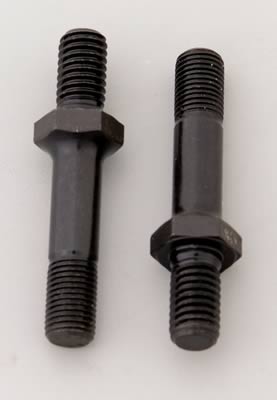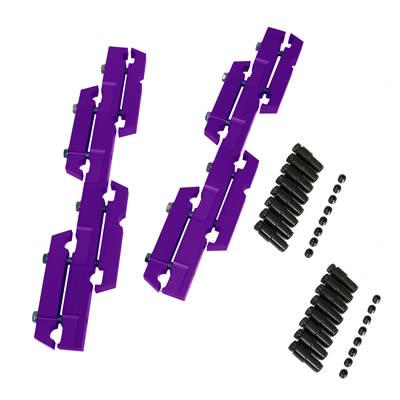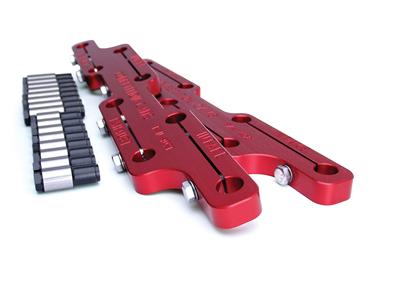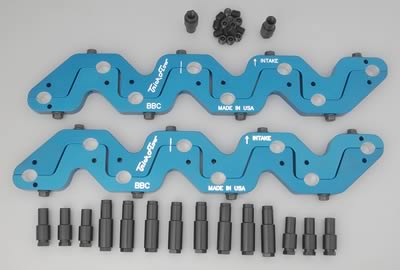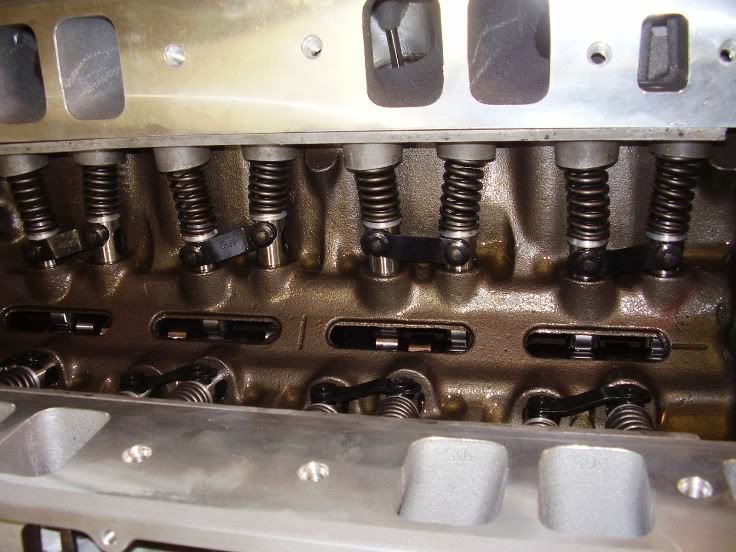2Loose
reliable source of info
Not sure where to post this, but as it is the rotating assembly that failed, I'll try here....
I helped a buddy put together a BBC 540 for racing this year from misc parts we had laying around the shop.
Block is from a Shafiroff previous 509, a set of aluminum RHS heads, used, from a previous motor, set up for racing, solid roller race cam, lots of lift, new springs spec'd for the lift and rpm, the valve to piston clearance was a little on the tight side, but still within acceptable limits, and that was not the problem.
Went to the track for some test and tune last Saturday, after running it, probably a total of 20 minutes at the shop (maybe a little more) while tuning the dominator and timing curve, it sounded stout, running 2.5" home built zoomies, it sounded crisp, sharp, oil pressure was 80 lbs, and yes, we oiled the heck out of it with the drill, oil was spouting out everywhere, before we started it up, and it banged to life on the first kick, MSD6 ignition.
First run at the track, a little hooking-up problem off the line (lightweight roadster certified for 8.50/slower), th400 built for this app, probably a little too much 1st gear for launching, ran a 9.3 at 145 mph, sounded crisp, solid, all the way down the track.
Second run, same thing, just going into the lights, oil prssure light, set for 30 lbs, came on, quick glance at the gage it was dropping fast then BANG the motor blew. Had a diaper on it, so no oil on the track. #3 rod sticking through the side of the pan.
Tore it down that nite, heads look good, no problem there, although one or two pistons looked like they might have been barely kissing the intake valves, that's where our tightest clearance was, so that would down the road have caused us problems, but not this time.
When the dist. was pulled, a MSD billet unit, the lower 0-ring where the oil passage passes by the dist. shaft housing, was missing! I know darn well it was on there when the dist. was put in the hole!
So my question, other then where did that 0-ring go (haven't found it yet), is that is there enough oil leakage past that dist. shaft housing to cause the motor to fail?
We have not pulled the pan yet to see the bottom, but there is bearing residue in the drained oil, and some up in the block valley, makes me think that part of the motor was not getting enough oil due to that missing 0-ring, and eventually a rod bearing failed, losing the rod and grenading the motor at the top end at about 6000 rpm....
Will report back what we find on the bottom end, it just seems suspicious that the 0-ring was missing and an otherwise solid running motor should blow on the second run!!!
Any ideas there??
Aloha,
Willy
I helped a buddy put together a BBC 540 for racing this year from misc parts we had laying around the shop.
Block is from a Shafiroff previous 509, a set of aluminum RHS heads, used, from a previous motor, set up for racing, solid roller race cam, lots of lift, new springs spec'd for the lift and rpm, the valve to piston clearance was a little on the tight side, but still within acceptable limits, and that was not the problem.
Went to the track for some test and tune last Saturday, after running it, probably a total of 20 minutes at the shop (maybe a little more) while tuning the dominator and timing curve, it sounded stout, running 2.5" home built zoomies, it sounded crisp, sharp, oil pressure was 80 lbs, and yes, we oiled the heck out of it with the drill, oil was spouting out everywhere, before we started it up, and it banged to life on the first kick, MSD6 ignition.
First run at the track, a little hooking-up problem off the line (lightweight roadster certified for 8.50/slower), th400 built for this app, probably a little too much 1st gear for launching, ran a 9.3 at 145 mph, sounded crisp, solid, all the way down the track.
Second run, same thing, just going into the lights, oil prssure light, set for 30 lbs, came on, quick glance at the gage it was dropping fast then BANG the motor blew. Had a diaper on it, so no oil on the track. #3 rod sticking through the side of the pan.
Tore it down that nite, heads look good, no problem there, although one or two pistons looked like they might have been barely kissing the intake valves, that's where our tightest clearance was, so that would down the road have caused us problems, but not this time.
When the dist. was pulled, a MSD billet unit, the lower 0-ring where the oil passage passes by the dist. shaft housing, was missing! I know darn well it was on there when the dist. was put in the hole!
So my question, other then where did that 0-ring go (haven't found it yet), is that is there enough oil leakage past that dist. shaft housing to cause the motor to fail?
We have not pulled the pan yet to see the bottom, but there is bearing residue in the drained oil, and some up in the block valley, makes me think that part of the motor was not getting enough oil due to that missing 0-ring, and eventually a rod bearing failed, losing the rod and grenading the motor at the top end at about 6000 rpm....
Will report back what we find on the bottom end, it just seems suspicious that the 0-ring was missing and an otherwise solid running motor should blow on the second run!!!
Any ideas there??
Aloha,
Willy

